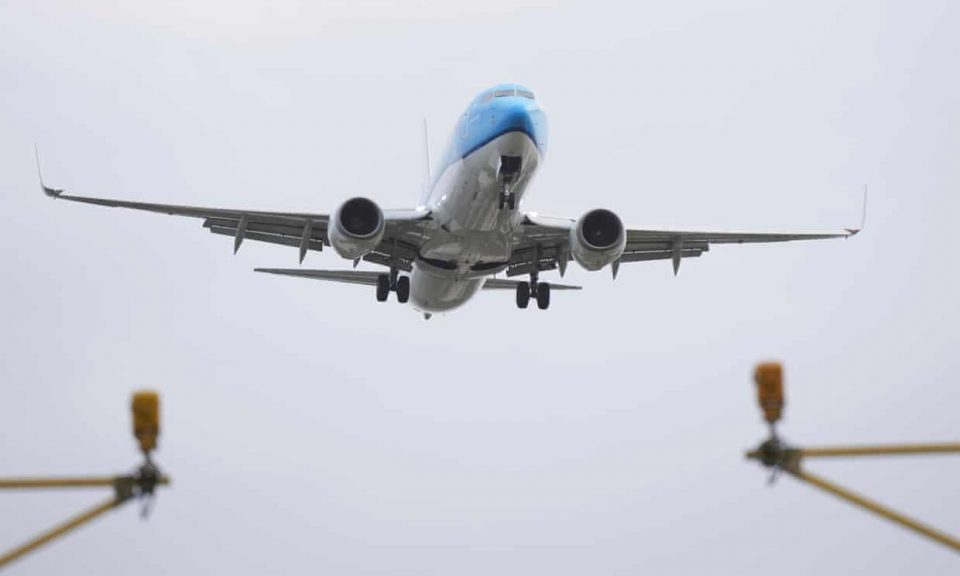Two decades and a mere 0.2°C increase in global temperatures since a Labour administration last deliberated on Heathrow, the conclusion seems unchanged: continue to expand. Rachel Reeves’s expected support for a third runway would prioritize economic growth and global commerce at the expense of climate considerations. Interviewers are once again questioning Ed Miliband about the possibility of his resignation in protest—a query that plagued headlines back in 2009.
UK airport expansion, particularly in the south-east, is inevitable, as four other airports in the London area have already moved ahead in the plan. Both Stansted and City have received permission to expand. Comprehensive plans that will significantly transform Gatwick and Luton have already passed through regulatory inspections and await approval from ministers.
Now, the revival of a Heathrow proposal looms large, one that would surpass all others in terms of additional flights, pollution, and carbon output. Is the nation prepared to confront the aviation industry’s environmental impact?
A key takeaway since Gordon Brown’s government endorsed Heathrow’s expansion plans 15 years ago is that a third runway has yet to materialize. Some hindrances were circumstantial, such as coalition politics that thwarted the runway, leading to the establishment of a commission that eventually recommended it again in 2015, followed by the pandemic and a dramatic decline in international travel.
Nonetheless, some obstacles endure: environmental concerns, noise complaints, the complexities of constructing the airport over one of Britain’s busiest motorways, and the necessity to demolish extensive surrounding residential areas, albeit already affected by various issues.
In 2024, Heathrow’s CEO Thomas Woldbye focused on developing a strategy to enhance the airport’s capacity using its existing facilities. Major investment decisions were stagnated during the prolonged sale of the principal shareholder Ferrovial’s stake to a Saudi investment fund and private equity firm Ardian, finalized in December.
Heathrow’s new proprietors will seek unequivocal governmental support before reviving a project initially estimated to cost £19 billion back in 2015. The airport will also need clarity on several associated policies, including its regulatory framework, updates to airspace management, and planning reforms.
The first question involves how the Civil Aviation Authority (CAA) regulates charges to airlines at Heathrow, shaping its financial model for expansion and influencing airlines’ stances on runway proposals. The second policy issue currently under CAA consideration could impact flight volumes and the communities subjected to overflights, potentially necessitating substantial noise compensation.
Thirdly, planning reforms could expedite permissions and limit legal challenges, aligning with the Starmer government’s aspirations. Following parliamentary approval for the runway, a year-long legal battle ensued, and extensive public consultations and planning evaluations remain essential before ministers can approve the development consent order (DCO). In contrast, the DCOs for Gatwick and Luton are already awaiting transport secretary Heidi Alexander’s review, which could significantly influence developmental choices.
The anticipated decision regarding Luton, initially set for early 2025 but postponed to a deadline of April 3, could enable a 40% increase in passenger capacity, raising the annual total to 32 million. As the terminal is publicly owned, the resulting profits from this expansion would directly support the local council rather than overseas investors.
Gatwick’s pending decision, due by February 27, could see a similar proportional increase for an already larger facility. Plans to extend an existing emergency runway and shift it 12 meters north could enable two runways—facilitating an additional 100,000 flights annually, reaching a total throughput of 75 million passengers. Chief executive Stewart Wingate emphasizes that Gatwick could significantly contribute to the government’s growth strategy with a £2.2 billion privately funded investment ready for deployment.
Although Gatwick downplays the notion of competition with Heathrow for a new runway, which characterized the Airports Commission’s selection process, it’s clear that many within London—including former Mayor Sadiq Khan—support Gatwick as a less contentious option. Last week, Khan informed the London Assembly that approval for Gatwick would virtually eliminate any likelihood of Heathrow obtaining a new runway.
While the fundamental issue of total carbon emissions will remain unaffected by which airport secures a new runway, noise pollution is a critical concern for numerous opponents.
Airspace modernization may help alleviate some noise impacts through steeper ascent patterns and diversified flight paths. However, this situation complicates Heathrow’s position: the postponed design and public feedback process for flight paths is now scheduled for 2027. Paul Beckford of the campaign group Hacan notes, “Homeowners in London and the south-east might find themselves beneath new flight paths, while those already affected could experience increased noise levels.”
Local advocates from the Gatwick Area Conservation Campaign (GACC) express skepticism regarding Gatwick’s assurances concerning the “noise envelope,” acknowledging that it will inevitably grow, despite aspirations for quieter aircraft. However, the CAA estimates that only 1.4% of Sussex’s population is significantly impacted by Gatwick noise, compared to Heathrow’s 4,300 against 309,200 individuals affected.
Collectively, the approved expansions at the other four “London” airports will result in hundreds of thousands of additional flights annually—surpassing the projections for an expanded Heathrow. Yet, this may still fall short of satisfying the chancellor: Heathrow has long maintained that its distinct “hub capacity,” which facilitates transfers to various UK nations and regions, is invaluable for economic and commercial activities. A spokesperson articulated, “Enhancing the economy necessitates increasing capacity at the UK’s hub airport, which is currently at capacity.”


